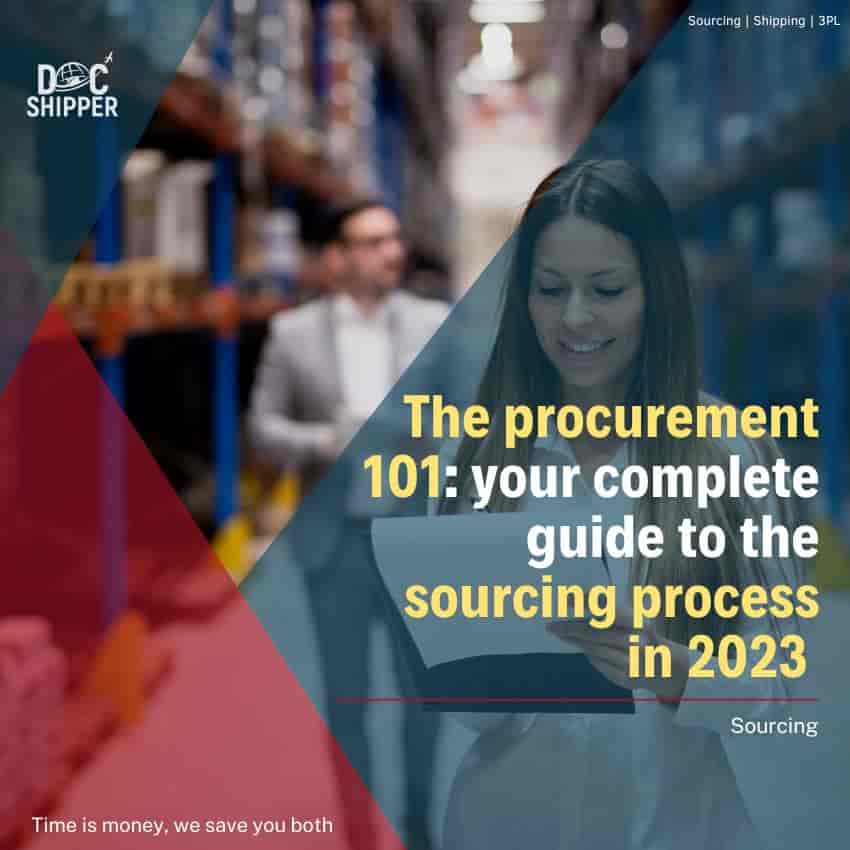Procurement is a critical function for businesses seeking to source goods and services efficiently and cost-effectively. However, managing the procurement process can be complex and time-consuming. That’s why DocShipper offers comprehensive sourcing services to help businesses navigate the procurement process with ease. Our team of experts can handle everything from supplier identification and negotiation to quality control and logistics, allowing you to focus on what matters most: growing your business. Read on for our complete guide to the sourcing process in 2023.
What does the term “procurement” mean?
Procurement refers to the process of acquiring goods, services, or works from an external source, often through purchasing or contracting. It involves a range of activities including:
- identifying needs
- selecting suppliers
- negotiating contracts
- managing supplier performance to ensure that the goods or services are delivered in a timely, cost-effective, and quality manner.
Procurement is an important function for organizations across a variety of industries and is critical to their success in delivering products or services to their customers.
DocShipper Info
DocShipper Info: Looking to master the art of procurement? DocShipper has got you covered! Our expert sourcing service can help streamline your procurement process and take your business to new heights. From finding suitable suppliers to negotiating favorable terms, we have the knowledge and experience to help you succeed. Let us be your procurement partner, contact us and see the results for yourself.
Comparison between Procurement and Purchasing
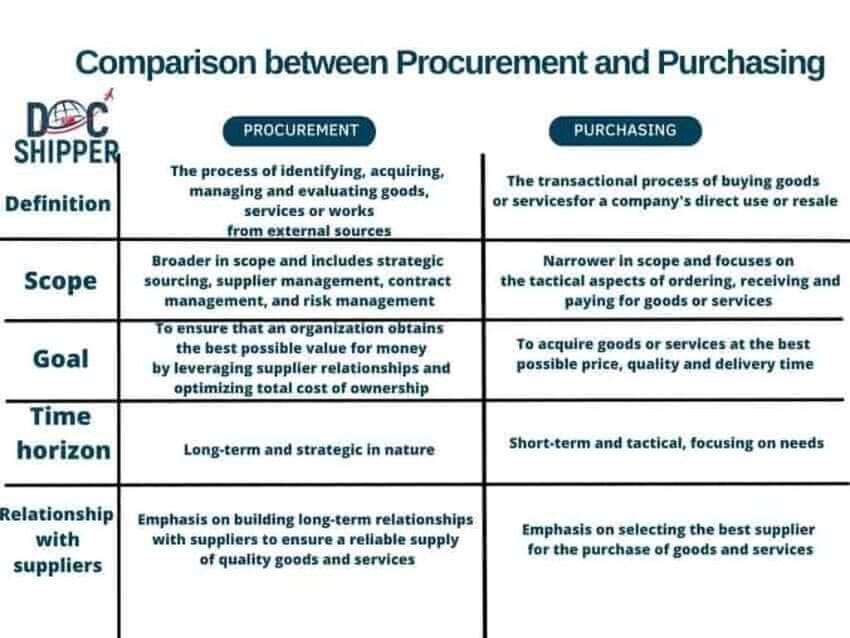
Strategic sourcing VS procurement
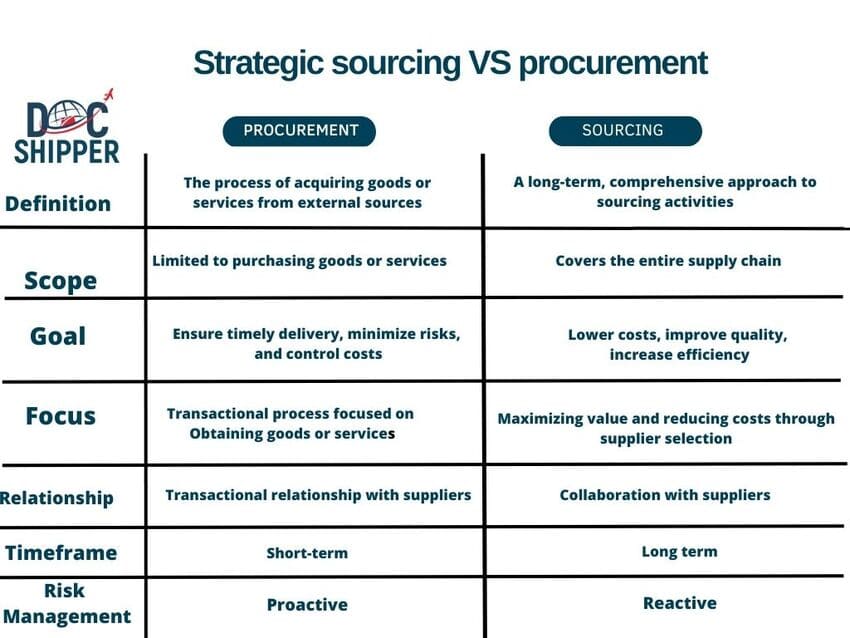
Procurement Categories
Direct Procurement
Direct procurement is a critical aspect of supply chain management, as it directly affects the quality and cost of the final product. Effective direct procurement requires careful planning, sourcing, and supplier relationship management to ensure that the right materials and components are acquired at the right price and in the right quantities. Companies that excel in direct procurement often achieve greater efficiencies, lower costs, and better product quality than their competitors.
Indirect Procurement
Indirect procurement refers to the process of acquiring goods and services that are not directly related to a company’s core business activities or products. These are typically goods and services used to support the company’s operations, but not directly used in the production process or resold to customers. Examples of indirect procurement may include office supplies, IT equipment and services, travel expenses, and consulting services.
Services Procurement
Services procurement refers to acquiring and managing services from third-party providers that are required to support a company’s operations. These services may include consulting services, marketing and advertising services, legal services, IT services, and many others.
DocShipper Tip
DocShipper Advice: Procurement is made easy with DocShipper! Our expert sourcing services are tailored to meet your business needs. We have the skills and knowledge to help you source the best products at competitive prices. Our procurement tips cover everything from market analysis to supplier relationship management, ensuring that you have a seamless and successful procurement process. Feel free to contact us and ask any questions.
What is the impact of procurement on business?
Procurement has a significant impact on a business in several ways:
Leads to higher cost savings
Procurement can increase cost savings for businesses. By effectively managing the procurement process, companies can identify cost-saving opportunities and negotiate better deals with suppliers. This can include consolidating suppliers, leveraging purchasing power, optimizing inventory levels, and reducing waste. These cost savings can ultimately lead to increased profitability for businesses.
Enhances the management of supplier relationships
 Effective procurement practices involve building and maintaining strong relationships with suppliers, which can lead to a more efficient and effective supply chain. This includes developing communication channels, setting performance metrics, and working collaboratively to resolve issues. By managing supplier relationships effectively, businesses can improve supplier performance, increase transparency, and build long-term partnerships. This can lead to improved quality, increased flexibility, and better access to innovation from suppliers.
Effective procurement practices involve building and maintaining strong relationships with suppliers, which can lead to a more efficient and effective supply chain. This includes developing communication channels, setting performance metrics, and working collaboratively to resolve issues. By managing supplier relationships effectively, businesses can improve supplier performance, increase transparency, and build long-term partnerships. This can lead to improved quality, increased flexibility, and better access to innovation from suppliers.
Boosts operational efficiency and automates processes
By digitizing procurement processes and leveraging technology, businesses can streamline workflows, reduce manual tasks, and improve data accuracy. This can include automating purchase order creation, implementing electronic invoicing and payment systems, and using analytics to identify areas for improvement. By optimizing the procurement process, businesses can reduce cycle times, eliminate errors, and improve process transparency. This can lead to better collaboration between departments, increased productivity, and a more agile supply chain.
Lifecycle of standardized contracts
 Implementing a procurement process allows the creation of a lifecycle of standardized contracts by defining the steps and activities that need to be taken during each stage of the procurement process. This includes identifying the need for a product or service, defining the requirements, sourcing potential suppliers, negotiating terms and conditions, and monitoring supplier performance. By following a standardized process, procurement teams can ensure that all contracts are managed consistently and efficiently, regardless of the product or service being procured.
Implementing a procurement process allows the creation of a lifecycle of standardized contracts by defining the steps and activities that need to be taken during each stage of the procurement process. This includes identifying the need for a product or service, defining the requirements, sourcing potential suppliers, negotiating terms and conditions, and monitoring supplier performance. By following a standardized process, procurement teams can ensure that all contracts are managed consistently and efficiently, regardless of the product or service being procured.
The Procurement Process Flow consists of 8 steps
Typically, the procurement process flow consists of 8 steps:
Identifying the need
The first step in the procurement process is to identify the need for a product or service. This can be done through a variety of means, such as conducting market research, receiving a request from another department, or identifying a gap in the current inventory.
Purchasing request
Once the need has been identified, the procurement team develops a plan for how the product or service will be procured. This includes determining the budget, defining the requirements, and identifying potential suppliers.
Analyzing the request
 After the procurement department receives the purchasing request, they analyze the details provided and determine the best course of action. This could include determining if the product or service requested is available in-house, if there are existing contracts that can be used, or if a new supplier needs to be identified. The procurement team also evaluates the specifications of the product or service to ensure that they meet the needs of the department that made the request. If the procurement team identifies any issues or gaps in the request, they will communicate with the department that made the request to clarify or modify the request as needed.
After the procurement department receives the purchasing request, they analyze the details provided and determine the best course of action. This could include determining if the product or service requested is available in-house, if there are existing contracts that can be used, or if a new supplier needs to be identified. The procurement team also evaluates the specifications of the product or service to ensure that they meet the needs of the department that made the request. If the procurement team identifies any issues or gaps in the request, they will communicate with the department that made the request to clarify or modify the request as needed.
Supplier evaluation
Supplier evaluation is the process of assessing potential suppliers or vendors against specific criteria to determine their suitability for fulfilling a company’s procurement needs. This evaluation typically involves gathering information about the supplier’s financial stability, quality control processes, capacity to meet demand, past performance, and compliance with ethical and legal standards. The goal of supplier evaluation is to ensure that the selected supplier is capable of providing quality goods or services at a competitive price while minimizing supply chain risk and supporting the company’s overall procurement strategy.
Looking for quotes
Looking for quotes is the process of requesting and collecting pricing information from potential suppliers or vendors. This step typically involves sending out a Request for Quotation (RFQ) or Request for Proposal (RFP) to suppliers who have been pre-qualified through the supplier evaluation process. The RFQ/RFP specifies the product or service required, the expected quantity, the delivery timeline, and any other relevant terms and conditions. Suppliers are asked to provide pricing information and other details about their ability to meet the company’s procurement needs. The goal of this step is to collect enough information to make an informed decision about which supplier to choose, based on factors such as cost, quality, and delivery time.
Contracting and negotiating to get the best deal
 After selecting the preferred supplier, the next step in the procurement process is contracting and negotiating. This involves finalizing the terms and conditions of the purchase, such as pricing, delivery timelines, payment terms, quality standards, warranties, and other relevant factors. The contract should be drafted and reviewed carefully to ensure it reflects the mutual agreement of both parties and is legally binding. Negotiations may involve some back and forth between the buyer and supplier to reach an agreement that satisfies both parties. Once the contract is finalized and signed, it becomes a binding agreement between the buyer and supplier.
After selecting the preferred supplier, the next step in the procurement process is contracting and negotiating. This involves finalizing the terms and conditions of the purchase, such as pricing, delivery timelines, payment terms, quality standards, warranties, and other relevant factors. The contract should be drafted and reviewed carefully to ensure it reflects the mutual agreement of both parties and is legally binding. Negotiations may involve some back and forth between the buyer and supplier to reach an agreement that satisfies both parties. Once the contract is finalized and signed, it becomes a binding agreement between the buyer and supplier.
Getting supplies
This step involves creating a purchase order or agreement with the supplier(s), arranging for payment, and coordinating the delivery or receipt of the goods or services. It may also involve quality control checks or inspections to ensure that the goods or services meet the required specifications and standards. Finally, the goods or services are accepted and received, and any issues or disputes are resolved.
Relationship management with suppliers
Relationship management with vendors is an important step in the procurement process. Once a vendor has been selected and contracted, it is important to maintain a positive and productive relationship with them. This includes establishing open lines of communication, setting clear expectations and performance metrics, and regularly reviewing the vendor’s performance. Effective relationship management can lead to better prices, improved quality, and greater reliability from vendors, ultimately benefiting the overall success of the procurement process and the organization as a whole.
The World Bank: briefcase study
 The procurement process introduced by the World Bank aims to ensure that funds provided by the organization are used effectively and transparently. The procurement process involves the acquisition of goods, works, and services for World Bank-funded projects. It includes a competitive bidding process, which allows qualified companies to bid on contracts for World Bank-funded projects. It also includes various policies and guidelines to promote transparency, fairness, and accountability. For example, the World Bank requires bidders to disclose any conflicts of interest and prohibits any form of bribery or corruption. The procurement process has helped the World Bank to ensure that its funds are used effectively and transparently and has contributed to the organization’s overall mission of promoting economic development and reducing poverty around the world.
The procurement process introduced by the World Bank aims to ensure that funds provided by the organization are used effectively and transparently. The procurement process involves the acquisition of goods, works, and services for World Bank-funded projects. It includes a competitive bidding process, which allows qualified companies to bid on contracts for World Bank-funded projects. It also includes various policies and guidelines to promote transparency, fairness, and accountability. For example, the World Bank requires bidders to disclose any conflicts of interest and prohibits any form of bribery or corruption. The procurement process has helped the World Bank to ensure that its funds are used effectively and transparently and has contributed to the organization’s overall mission of promoting economic development and reducing poverty around the world.
Statistics and KPIs for Tracking the Procurement Process
Effective procurement can help organizations save money and ensure that they get high-quality products and services. Here are four key performance indicators (KPIs) that organizations can use to track their procurement process:
1/Cycle time: This measures the time it takes to achieve a procurement process from start to finish. A shorter cycle time means that the organization can procure goods and services more quickly, which can help it respond faster to changing market conditions.
2/Cost savings: This measures the amount of money that an organization saves by using its procurement process. Cost savings can come from negotiating better prices with suppliers, reducing the number of suppliers used, or improving the efficiency of the procurement process.
3/Supplier performance: This measures the performance of the organization’s suppliers. It can include metrics such as on-time delivery, product quality, and responsiveness to requests. Tracking supplier performance can help organizations identify areas for improvement and make better decisions about which suppliers to use.
4/ Compliance: This measures how well the organization is adhering to its procurement policies and procedures, as well as any relevant laws and regulations. Compliance can include measures such as the number of contracts reviewed for compliance, the percentage of purchases made through approved channels… Ensuring compliance is important for mitigating risk and maintaining transparency in the procurement process.
DocShipper Alert
DocShipper Alert: Are you facing challenges in managing your procurement process? Don’t let risks and problems hinder your business growth! DocShipper is here to help. Our expert team can identify the risks such as supplier search quality control, sourcing, and negotiation, and provide tailor-made solutions to overcome them. We have the expertise to streamline your procurement process and mitigate risks. Don’t wait until it’s too late, contact DocShipper to be your procurement problem-solver!
5 key steps to optimize your procurement process
Procurement is a crucial function of any organization as it involves purchasing goods and services from external suppliers. A well-optimized procurement process ensures that the organization can acquire the required resources at the right quality, quantity, and price. Here are five best practices to optimize the procurement process for your business:
Identifying and reducing the risk management process
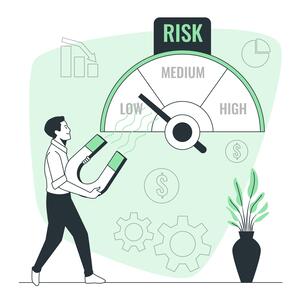 One of the critical aspects of procurement is risk management. It is essential to identify potential risks associated with the procurement process, such as supply chain disruptions, quality issues, or financial risks. Once identified, measures should be put in place to mitigate the risks, such as diversifying suppliers, improving quality control, or developing a contingency plan.
One of the critical aspects of procurement is risk management. It is essential to identify potential risks associated with the procurement process, such as supply chain disruptions, quality issues, or financial risks. Once identified, measures should be put in place to mitigate the risks, such as diversifying suppliers, improving quality control, or developing a contingency plan.
Inventory control
Effective inventory management is key to optimizing the procurement process. Organizations should have a clear understanding of their inventory levels to avoid overstocking or stock outs. By leveraging technology such as inventory management software, businesses can monitor inventory levels in real-time and automate replenishment processes.
Improve Your Vendor Management Approaches
Choosing the right vendor is crucial to the success of any procurement process. Businesses should establish a vendor management process that includes selecting the right vendors, negotiating favorable terms and conditions, and maintaining good relationships with vendors. This ensures a steady supply of quality products and services at competitive prices.
Create a customized Workflow
 Procurement workflows should be customized to fit the unique needs of your organization. It’s essential to identify the needs of your organization and create workflows that are efficient and effective. This includes outlining the procurement process, defining roles and responsibilities, and establishing clear communication channels.
Procurement workflows should be customized to fit the unique needs of your organization. It’s essential to identify the needs of your organization and create workflows that are efficient and effective. This includes outlining the procurement process, defining roles and responsibilities, and establishing clear communication channels.
Implement E-procurement solutions to automate the prioritization process
E-procurement solutions automate various procurement processes, including prioritizing purchase requests, sending out requests for proposals, and issuing purchase orders. This helps to streamline the procurement process, reduce manual errors, improve transparency, and save time and money.
The Best Procurement Software Tools for the year 2023
Coupa
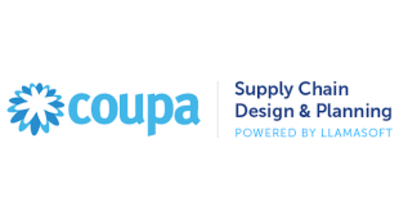
Coupa is a cloud-based procurement software tool that offers features such as e-procurement, invoice management, supplier management, and spend analytics. It is known for its ease of use and customization capabilities.
SAP Ariba
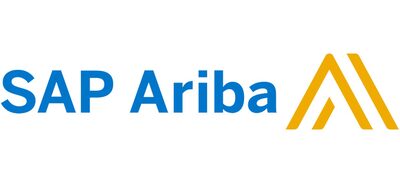
SAP Ariba is a procurement platform that offers features such as e-sourcing, contract management, supplier management, and spend analysis. It is a well-established solution and is widely used by large enterprises.
Basware
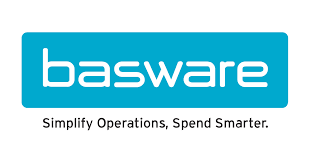
Basware is a cloud-based procure-to-pay platform that provides procurement, invoice automation, and supplier management solutions, as well as analytics and reporting capabilities.
Precoro
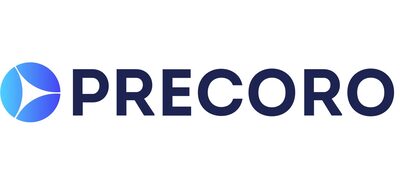
Precoro is a cloud-based procurement software tool that offers features such as purchase order management, invoice management, and supplier management. It is known for its user-friendly interface and affordability.
Kissflow Procurement Cloud

Kissflow is a cloud-based procurement solution that offers features such as purchase order management, invoice management, and supplier management. It is known for its workflow automation capabilities and intuitive interface.
Conclusion
In conclusion, effective procurement management is essential for any organization that wants to succeed in today’s competitive business environment. It involves identifying the needs of the organization, selecting the right suppliers, negotiating the best deals, and managing the delivery of goods and services. By following these steps, organizations can achieve significant cost savings, improve supplier performance, and enhance the overall quality of their products and services.
If you face difficulty with your procurement process, our DocShipper professionals are available to ensure the successful completion of your procurement or sourcing process, and they will respond to any of your questions. They can help with sourcing in addition to shipping and third-party logistics services. Contact-us now!
FAQ | The Procurement 101: your complete guide to the sourcing process in 2023
Read more
Looking for more? These articles might interest you:
DocShipper info: Do you like our article today? For your business interest, you may like the following useful articles :
Need Help with Logistics or Sourcing ?
First, we secure the right products from the right suppliers at the right price by managing the sourcing process from start to finish. Then, we simplify your shipping experience - from pickup to final delivery - ensuring any product, anywhere, is delivered at highly competitive prices.


Fill the Form
Prefer email? Send us your inquiry, and we’ll get back to you as soon as possible.
Contact us





